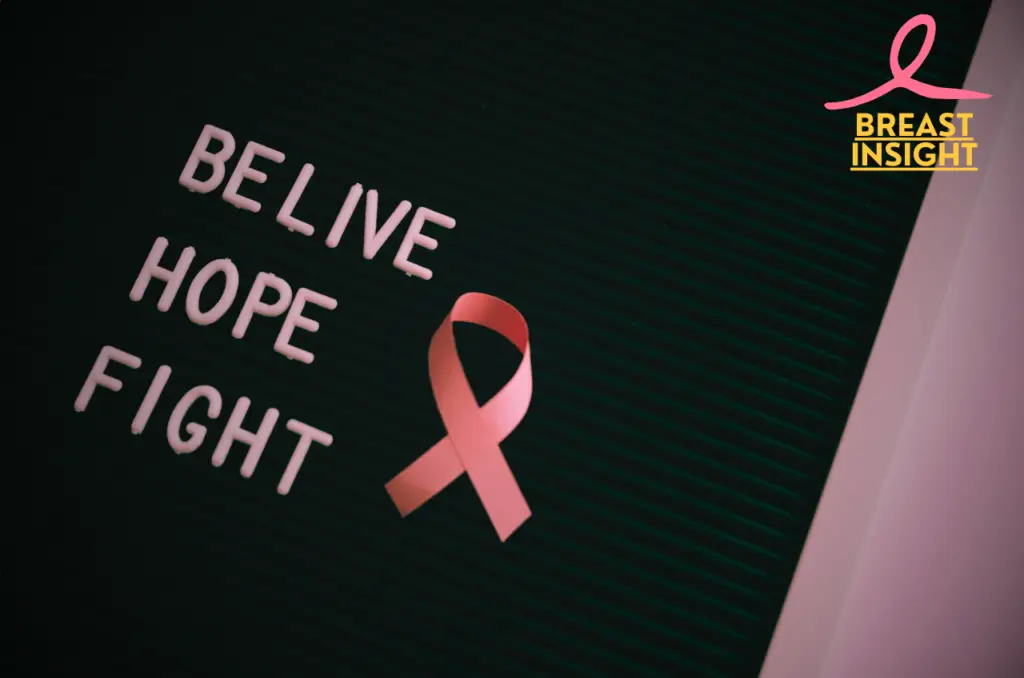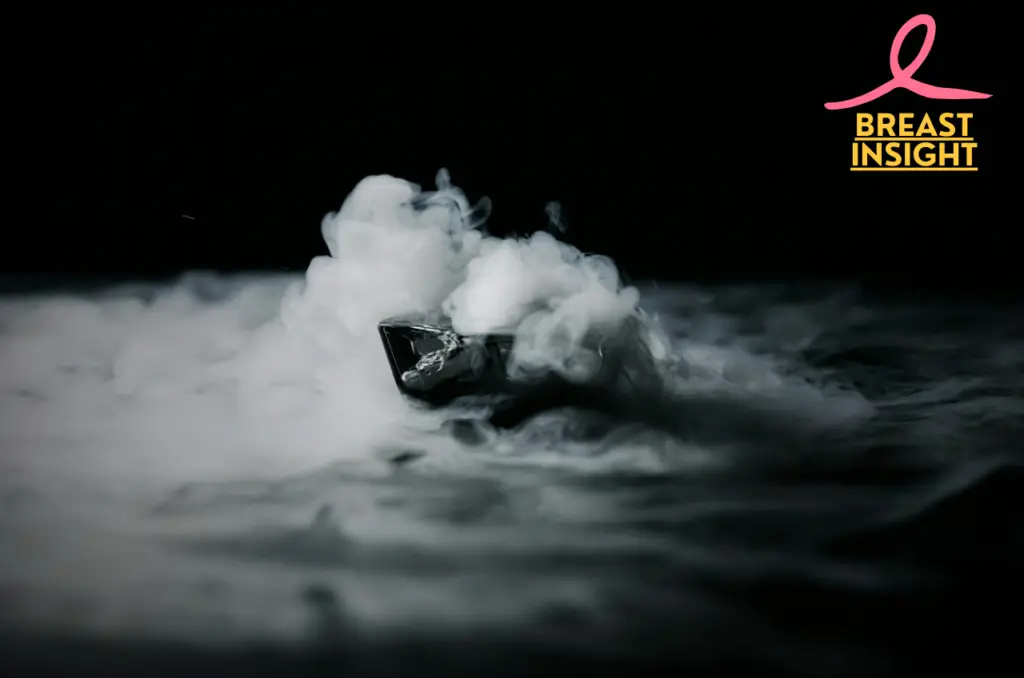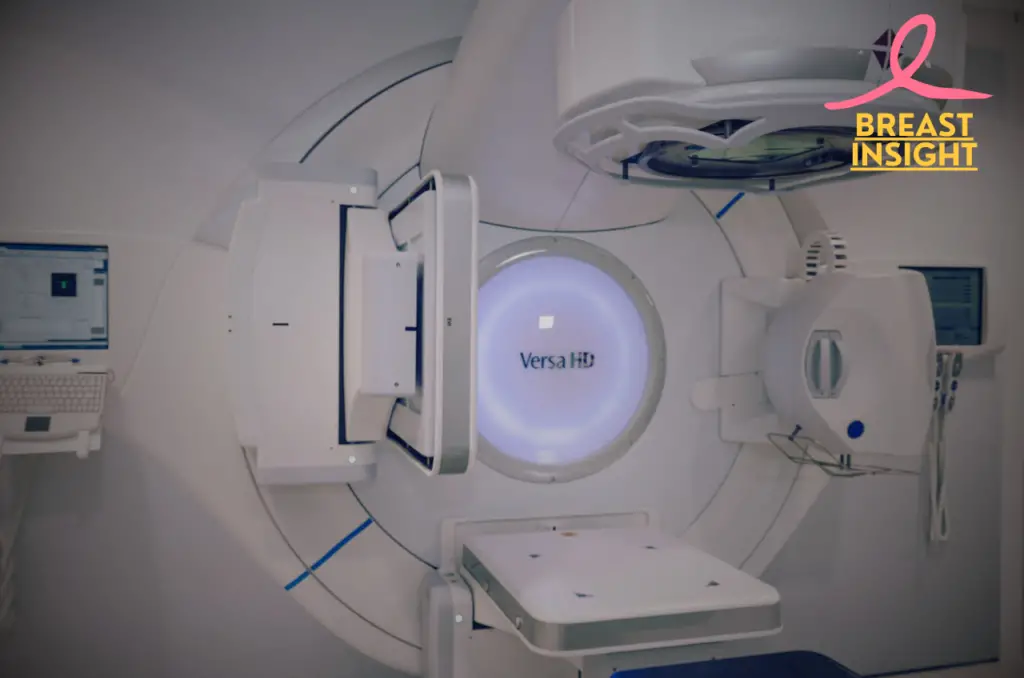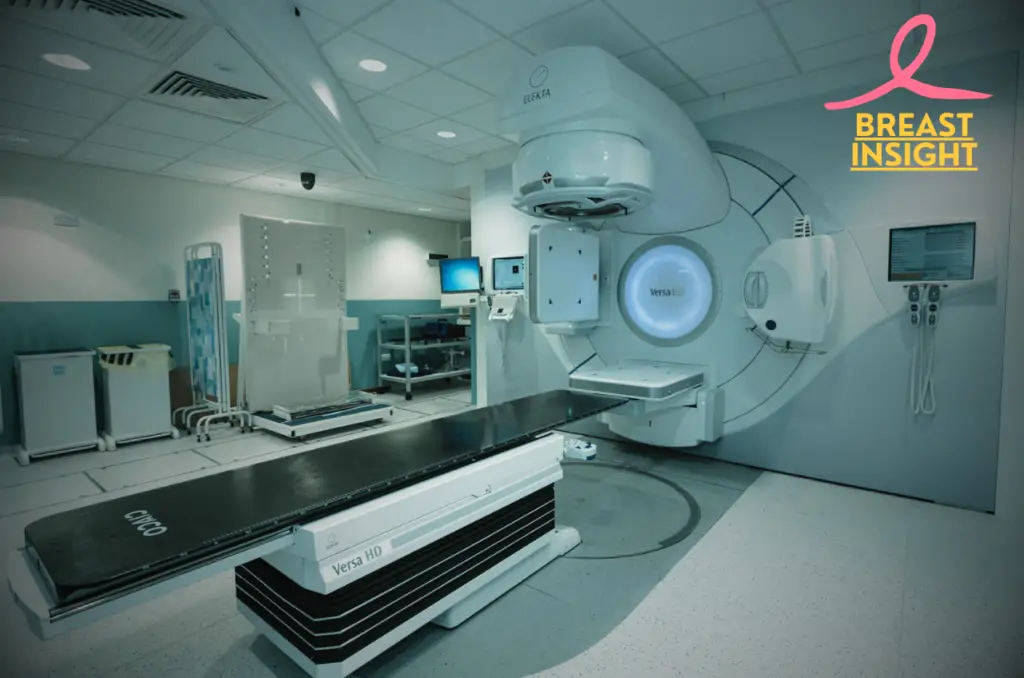Each year, millions of breast cancer patients are confronting the difficult choice they face on their journey with their treatment. Radiation therapy is often a large portion of the process, although this curative power can harm so many cancer cells, many patients are wondering: “What does this mean for my body?”
Radiation therapy, like every other medical treatment, has side effects. Starting with transient changes within the skin to possible long-term problems, knowledge of their character falls far from simple awareness-it’s about being prepared and armed. Whether it means starting treatment, waiting with a loved one, or simply looking for knowledge, understanding what’s to come can make all the difference in your journey through cancer.
Let’s delve into the broad landscape of side effects of radiation therapy-from the earliest signs up to long-term influences-while unearthing how modern medicine tries to treat this therapy not so harsh, but also refuses to compromise on its proficiency. We shall work through various physiological responses and recap how long to get better so that you’re better equipped to look forward to treatment with positive optimism.

Common Early Side Effects
Skin Appearance and Redness
Radiation therapy causes skin reactions in the irradiated area, which can be compared to sunburn. Patients usually experience:
- Redness and warmth
- Dryness and itching
- Peeling or flaking
- Darkening of skin tone
- Increased sensitivity
Fatigue and Exhaustion
Physical exhaustion occurs during treatment in 80-90% of patients:
- Morning fatigue
- Decreased energy
- Struggles with everyday tasks.
- Psychological exhaustion
Breast Swelling and Tenderness
Treatment-related inflammation can cause
- Increased breast size
- Touch sensitivity
- Transitory hardness
- Occasional piercing sensations
Chest Pain
Common chest-related symptoms include:
- Mild pain or tightness
- Difficulty with deep breaths
- Feeling of heaviness
| Symptom Severity | Typical Onset | Duration |
| Mild | Week 1-2 | 2-4 weeks |
| Moderate | Week 2-3 | 4-6 weeks |
| Severe | Week 3-4 | 6-8 weeks |
Most of the side effects tend to arise within the first couple of weeks and tend to be at their worst in week 3-4. Symptoms are often manageable with good care, and they typically start resolving a few weeks after completing the treatment. For those interested in a deeper understanding of breast cancer, including its causes, symptoms, and treatments, explore our in-depth guide on breast cancer to learn more about this complex condition. With the immediate effects described above, it is time to delve into late physical consequences of radiation therapy.

Long Term Physical Effect
Changes in Breast Appearance
Permanent breast appearance changes result from the radiation therapy process. Such changes usually involve:
- Skin texture alterations (firmer or slightly darker)
- Slight size differences compared to untreated breast
- Possible visible blood vessels under the skin
- Minor shape modifications due to tissue response
Lymphedema Risk
Presently, lymphedema is still one of the commonest challenges that take place after radiation therapy. It results from the abnormal accumulation of lymph fluid in soft tissues leading to swelling.
| Risk Factors | Prevention Strategies |
| Multiple lymph node removal | Regular arm exercises |
| Radiation to armpit area | Compression garments |
| Obesity | Weight management |
| Infection in affected arm | Skin care routine |
Reduced Arm Mobility
Radiation therapy can affect shoulder and arm movement through:
- Tissue fibrosis or hardening of soft tissues
- Muscle tightness enveloped the chest wall.
- Scar tissue formation
- Joint stiffness in shoulder area
To maintain arm mobility, patients should:
- Perform prescribed stretching exercises
- Attend physical therapy sessions
- Daily perform range-of-motion activities
- Use proper posture techniques
These physical changes usually stabilize within the first year after treatment, though some effects may persist longer. Radiation therapy, while effective, does come with impacts on the body. For a comprehensive understanding of what cancer is, including its causes, symptoms, and treatment options, read our detailed guide on cancer. Knowing this, let us now consider the impacts of radiation on tissues.

Internal Tissue Impact
Heart and Lung Exposure
Radiation therapy for breast cancer impacts all the nearby organs, especially the heart and lungs. That will depend on:
- Tumor location (left vs. right breast)
- Radiation dosage and method
- Individual anatomy
Rib cage pain
Common rib cage-related effects include
- Increased bone fragility
- Localized pain and tenderness
- Potential for rib fractures in rare cases
Effect on Adjacent Organs
| Organ | Common Effects | Risk Level |
| Heart | Minor inflammation | Low-Moderate |
| Lungs | Radiation pneumonitis | Moderate |
| Esophagus | Mild irritation | Low |
| Thyroid | Functional changes | Low |
Blood Vessel Changes
Radiation can cause:
- The narrowing of small blood vessels.
- Lower blood supply to treated areas
- formation of new blood vessels (Neovascularization)
- Potential long-term circulation changes
Nerve Tissue Effects
Patients could face:
- Humming or pinching
- Sensitive nerve, mild to moderate
- Occasional shooting pain
- Alterations in skin perceptions.
Modern radiation techniques like IMRT (Intensity-Modulated Radiation Therapy) have significantly reduced these internal tissue impacts through more precise targeting. However, patients should maintain regular follow-ups to monitor any developing symptoms. Understanding the causes of breast cancer can be key in recognizing how these side effects are managed. Explore the key causes of breast cancer to gain insight into the origins of the disease and potential preventative measures. Now that we understand the internal effects, let’s explore effective strategies for managing these treatment side effects.

Managing Treatment Side Effects
Skincare Protocols
- Apply fragrance-free moisturizer 3-4 times daily
- Use gentle, alcohol-free cleansers
- Avoid exposing treated areas to the sun
- Wear loose, soft cotton clothing
Pain Management Techniques
- Cold/warm compress application
- Prescription pain medicines
- Soft massage (when doctor permits)
- Relaxation techniques and meditation
Exercise Recommendations
| Activity Type | Frequency | Benefits |
| Gentle stretching | Daily | Maintains flexibility |
| Walking | 3-5 times/week | Improves circulation |
| Light yoga | 2-3 times/week | Reduces stiffness |
| Swimming | Once cleared by doctor | Low-impact cardio |
Dietary Changes
- Increase protein intake for tissue repair
- Consume antioxidant-rich foods
- Keep well-hydrated (8-10 glasses daily)
- Anti-inflammatory food
Managing the side effects of radiation therapy calls for all-round care. It involves the following: maintenance of proper skincare using gentle products and constant moisturizing, medical as well as natural pain management, right exercise that will help maintain mobility and avoid fatigue, proper nutrition in healing, and energy levels.
Research indicates that patients adhering to these management protocols enjoy improved outcomes and a swifter recovery. Additionally, understanding your specific stage of breast cancer can further tailor your approach to treatment and side effect management. Learn more about the stages of breast cancer and what each one entails to stay informed about your treatment journey. Maintaining regular communication with your healthcare team is vital to adjust these strategies when necessary. Although side effects may pose challenges, the majority of patients discover they are manageable with the right care and attention.
Knowing how to manage side effects of treatment, let’s proceed on what you should expect during the recovery period.

Recovery Timeline
Immediate Healing Phase: 0-3 months
- Skin reactions peak within 1-2 weeks after treatment
- Fatigue peaks most in the first month
- Gradually improves breast tenderness and swelling
| Timeline | Expected Recovery Markers |
| Week 1-2 | Peak skin reactions, maximum fatigue |
| Week 3-4 | Skin healing begins, fatigue continues |
| Month 2-3 | Significant improvement in skin condition |
Medium-term Recovery (3-12 months)
- The skin color returns to normal within 6-12 months
- Gradually, the breast tissue becomes soft.
- Energy levels usually go back to normal.
- Radiation-related inflammation subsides
Long-term Considerations (Beyond 12 months)
- Breast shape stabilizes at 1-2 years.
- Ongoing surveillance to monitor for late effects
- Some patients may have
- Minor changes in breast size
- Fine skin texture variations
- Occasional mild discomfort
| Recovery Phase | Key Focus Areas |
| Immediate | Skin care, rest, wound healing |
| Medium-term | Tissue recovery, activity resumption |
| Long-term | Monitoring, preventive care |
Most patients experience striking improvement in radiation-related symptoms within the first year following treatment. However, everyone heals at his or her pace, some far more rapidly than others. Follow-up visits ensure continued observation of the course of events if there should be any sign of concern. For those interested in understanding symptoms beyond the visible side effects, discover some hidden symptoms of breast cancer that are crucial to know for early detection and better outcomes.
With proper understanding of the recovery timeline, let’s now see how the medical advances of modern times have enhanced radiation therapy in the treatment of breast cancer patients.

Modern Treatment Advances
Targeted Radiation Techniques
Modern radiation therapy has undergone remarkable evolution, characterized by precision-targeting technologies that greatly reduce harm to healthy tissue. The following are the key advancements:
- Image-Guided Radiation Therapy (IGRT)
- Intensity-Modulated Radiation Therapy (IMRT)
- 3D Conformal Radiation Therapy
- Proton Therapy
Reduced Side Effect Protocols
Treatment protocols today are aimed at minimalizing side effects with effectiveness:
| Protocol | Benefit | Impact |
| Hypofractionation | Fewer treatment sessions | Less skin irritation |
| Deep Inspiration Breath Hold | Protects heart tissue | Reduced cardiac complications |
| Surface Guided Radiation | Better accuracy | Minimal healthy tissue exposure |
New Protective Measures
Innovative protective measures have transformed breast cancer radiation therapy.
- Hydrogel spacers to protect nearby organs
- Real-time motion tracking systems
- Sophisticated cooling system for the skin
- Radio-protective drugs
These technological advances have significantly improved treatment outcomes. Radiation therapy today gives more accurate doses, leading to up to 50% fewer side effects than the old ways of treatment. Specialized computer algorithms also aid in the formulation of individualized treatments tailored to accommodate anatomical and other individualized characteristics. For a deeper dive into the latest breast cancer treatment options, explore top treatments and their benefits to find the best fit for each unique case.
Some of the important benefits of treatment planning with artificial intelligence are significant improvements in forecasting and evading potential side effects during treatment. Combined with state-of-the-art imaging techniques, these developments enable continuous monitoring of and refinement of treatment parameters.

Conclusion
Radiation therapy during breast cancer is really challenging to deal with side effects but knowing and preparing for those side effects can go a long way in making it much easier. At least, though skin changes and fatigue are typically initial transient side effects, an awareness of potential late effects on tissues and organs allows better preparation and proactive management.
Modern techniques for radiation therapy have greatly reduced the side effects of treatment without loss of efficacy. Work closely with your treatment team to follow recommended guidelines and make use of all support mechanisms available to you in the recovery process. Again, realize that everyone’s experience is different, and it is perfectly appropriate to ask the medical team questions or voice concerns specific to your situation.
Frequently Asked Questions (FAQs)
What are the most common side effects of radiation therapy for breast cancer?
Common side effects include skin irritation, fatigue, and changes to the texture of the breasts. Treated skin will present redness, dryness, or peeling in this area. Fatigue is very common and is usually secondary to the reaction from the rest of the body. Fortunately, most of these are usually controllable and self-limiting, with symptoms gradually subsiding over time.
How long do the side effects of radiation therapy last?
The duration of side effects last from radiation therapy varies greatly. Most short-term effects, such as skin irritation and fatigue, peak during the time of treatment and can persist for several weeks after that. Side effects, including changes in the appearance or feeling of the skin, and potential risks of lymphedema, may last weeks, months, or even longer. Regular follow-ups with healthcare providers are also important in monitoring and managing the effects.
Can radiation therapy cause emotional side effects?
Indeed, radiation therapy can bring about emotional side effects, such as anxiety, depression, and emotional fatigue. The strain of undergoing cancer treatment, along with the physical changes that accompany it, can significantly affect one’s mental health. However, seeking support through counseling, support groups, or therapy can assist patients in navigating these emotional challenges and enhance their overall well-being.
What advancements have been made in radiation therapy for breast cancer?
Recent advancements in radiation therapy encompass techniques such as Intensity-Modulated Radiation Therapy (IMRT), proton therapy and Deep Inspiration Breath Hold (DIBH). These innovations significantly enhance the precision of targeting tumors while minimizing radiation exposure to healthy tissues, thus reducing side effects and improving patient outcomes. Such progress renders radiation therapy not only safer but also more effective for patients battling breast cancer.

